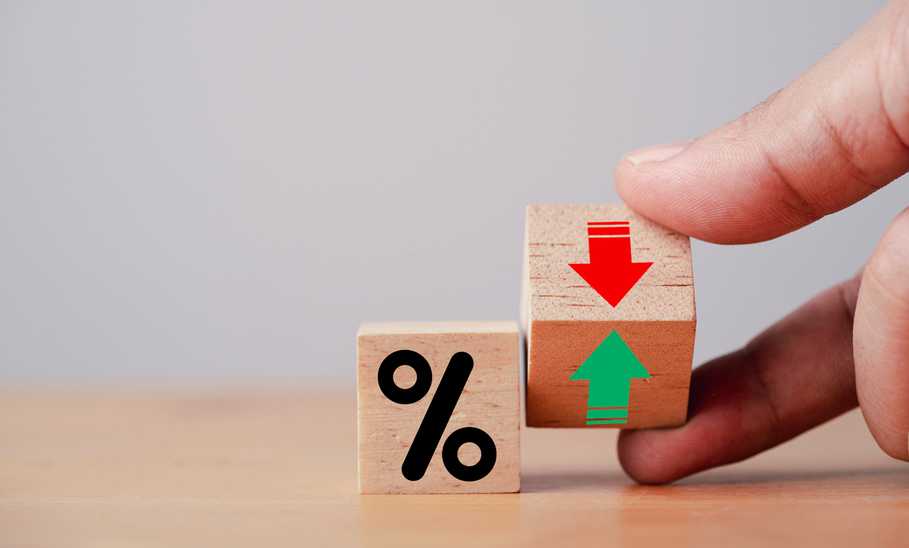Interest Rate vs. APR: How Do They Differ?

Our evaluations and opinions are not influenced by our advertising relationships, but we may earn a commission from our partners’ links. This content is created by TIME Stamped, under TIME’s direction and produced in accordance with TIME’s editorial guidelines and overseen by TIME’s editorial staff. Learn more about it.
When borrowing money—whether for buying a house or a car, or using a credit card—you'll encounter two important terms: interest rate and annual percentage rate (APR). Understanding the differences can help you make informed financial decisions and save money. Keep reading to learn more about interest rates and APRs, including how to calculate these two figures and compare them when making borrowing decisions.
| Factor | Interest rate | APR |
|---|---|---|
Includes Fees? | No | Yes |
Annualized rate | Depends on usage | Yes |
Good for comparing accounts | No | Yes |
When borrowing money, the interest rate represents the cost of borrowing and is expressed as an annual percentage of the total loan amount.
Interest rates are calculated using this formula:
I = Prt
In the formula, I represents the interest paid. P is the present value or principal amount used for the calculation, such as the number of dollars borrowed at the start of a calculation period. r is the interest rate and t is the number of periods.
Here’s an example: Let’s say you want to repay a $1,000 loan over a five-year period, at an interest rate of 5%. Here is the calculation you would use:
I = $1000 (.05) (5)
Interest = $250
Here is a comparison using 5% and 10% interest rates for the same loan amount. Remember that this calculation doesn’t account for any regular payments made on the loan, which would reduce the amount of interest charged.
| Beginning Balance | $1,000 | $1,000 |
|---|---|---|
Number of Years | 5 | 5 |
Interest Rate | 5% | 10% |
Interest Earned | $250 | $500 |
Ending Balance | $1,250 | $1,500 |
A good interest rate depends on different factors, including your personal credit score or banking relationship, the financial institution’s terms, and market interest rate conditions. Market interest rates change due to actions by the Federal Reserve, the central bank of the U.S.
A lower interest rate is best when borrowing money. A higher interest rate is better if you’re saving or investing.
The annual percentage rate (APR) is the yearly interest rate charged by a lender, including the cost of any fees attached to the loan. APR is often the best measure for comparing the cost of different borrowing options because it includes all borrowing costs, not just the interest rate.
For example, suppose you’re considering two different personal loans: one with a higher interest rate and no origination (setup) fee and the other with a lower interest rate, but with a fee. The APR will incorporate the fee, expressed as a percentage.
You can use APR to determine which is cheaper.
APR can also be used to compare different types of loans, such as credit cards versus personal loans. If you’re considering consolidating credit card debt with a personal loan, APR can help determine if consolidation is a good deal.
The annual percentage rate (APR) is the yearly interest rate (including fees) charged by a lender—and paid by the borrower—on a sum of money borrowed. For example, if you borrow $100 and the APR is 5%, the cost of borrowing this money is $5 annually. If the $100 loan charges a fee, the actual annual cost of borrowing may be higher.
APR is annualized, so it indicates how much a loan costs for an entire year, per year. The APR is always a per-year interest rate, even if the loan lasts less than a year.
Let’s examine the formula for APR:
APR=((Interest + Fees)/Principal)/n×365×100
The variables are:
Suppose you’re taking out a loan for one year. The loan is $1,000 and the interest rate is 5%. The loan includes a $10 origination fee. According to this Experian APR calculator, the APR would be 6.86%.
| Monthly payment | $85.61 |
|---|---|
Number of payments | 12 |
Payoff term | 1 year |
Total interest paid | $27.29 |
Total payments | $1,027.29 |
A good APR depends on the type of loan, your personal credit history, the lender, and market interest conditions. An APR of 20% on a credit card would be considered by many to be standard; however, a 20% APR on a personal or car loan would be considered very high.
A simple interest rate is useful for a loan or savings situation where interest is only applied once. It helps you quickly and easily calculate interest with the most simple formula. However, you need a more advanced formula, such as APR, to account for monthly payments or compound interest.
APR is used to compare borrowing accounts, such as loans and credit cards. It includes fees and interest charges, while the simple interest rate doesn’t. APY (Annual Percentage Yield) is used for savings accounts, certificates of deposit (CDs), and investments.
For more information on APY, check out this guide to APY in banking.
Understanding interest rates and APRs is critical in making savvy financial decisions. Remember, a lower interest rate might not always mean a better deal if the APR is significantly higher because of fees. Always consider the APR when comparing loan offers to ensure you choose the most cost-effective option.
APR provides a more comprehensive view of the total cost of the loan, including fees, which makes it a better metric for comparing loans. Interest rates are better for simple calculations without fees or multiple payment periods.
A fixed interest rate is an interest rate that remains constant over the life of the loan. In contrast, APR includes the interest rate and any other fees associated with the loan.
APR is the total cost of borrowing, expressed as an annual percentage. It includes the interest rate, plus any other fees or charges.
APR rates can be high because they include interest costs and other borrowing costs, such as fees. They may be high depending on the loan type, lender, credit history, and market interest rates.
The information presented here is created by TIME Stamped and overseen by TIME editorial staff. To learn more, see our About Us page.



